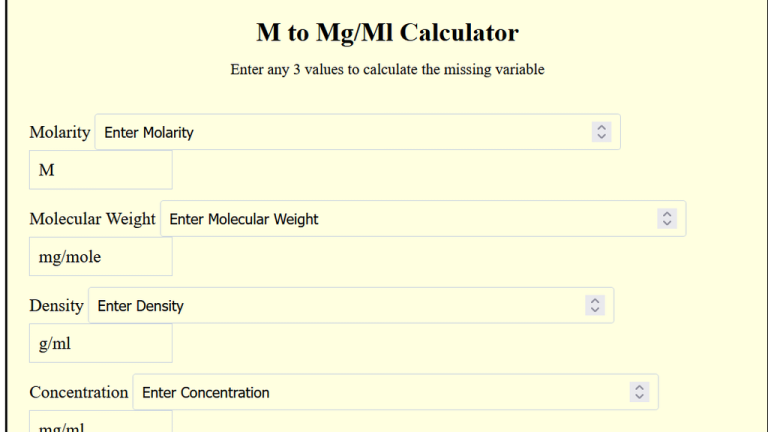Moles to Atoms Calculator
To convert moles to atoms, multiply the number of moles by Avogadro’s number, 6.0221415 \times 10^{23}6.0221415×1023. This gives the number of atoms in a given amount of substance.
To convert moles to atoms, multiply the number of moles by Avogadro’s number, 6.0221415 \times 10^{23}6.0221415×1023. This gives the number of atoms in a given amount of substance.
The Moles to Atoms Calculator is a practical tool for converting the quantity of a substance in moles to the number of atoms. This conversion relies on Avogadro’s number, a fundamental constant in chemistry that represents the number of atoms or molecules in one mole.
Essentially, this calculator is invaluable in chemical calculations, lab work, and molecular chemistry, as it allows scientists to understand the scale of atoms involved in reactions and compound structures.
| Variable | Description |
|---|---|
| A | Total number of atoms |
| Amount in moles | |
| | Avogadro’s number |
Example 1:
Convert 2 moles of a substance to atoms.
| Step | Calculation |
|---|---|
| 1. | |
| 2. | |
Answer: 1.204×1024 atoms
Example 2:
Convert 0.5 moles of a substance to atoms.
| Step | Calculation |
|---|---|
| 1. | |
| 2. | |
Answer: 3.011×1023 atoms
The Moles to Atoms Calculator is a result-oriented tool in chemistry. It works to convert the moles of a substance to the corresponding number of atoms.
By depending on Avogadro’s number (6.022 x 10²³ atoms per mole), this calculator simplifies the conversion. Thus, making it ideal for both students and professionals in chemistry to do their job conveniently.
Simply, by entering the number of moles, you can quickly find the total atoms for a specific element or compound, which is essential for understanding molecular quantities in reactions.
For instance, if you’re working on a moles to atoms worksheet, solving atoms to grams problems, or calculating particles in compounds like CO₂ or SiO₂, this tool provides fast and accurate results. Additionally, it supports conversions involving grams, molecules, and ions, making it versatile for various chemical calculations.
Precisely put, the Moles to Atoms Calculator offers an easy way to convert between moles and atoms, supporting accurate calculations for academic and professional chemistry needs.
To calculate the improvement percentage, subtract the original value (OV) from the new value (NV), divide by the original value, and multiply by 100. The Improvement Percentage Calculator is an efficient tool for calculating the percentage improvement between two values, such as performance metrics, time reductions, or cost savings. It is commonly used in project…

Multiply the magnitudes of two vectors and the sine of the angle between them to find the cross product. The Cross Product Calculator computes the vector perpendicular to two given vectors in 3D space, along with its magnitude and direction. This is useful in physics, engineering, and mathematics to determine areas of parallelograms, torque, or…

To calculate a bowling handicap, subtract your average score from the base score, then multiply the result by the handicap percentage. Bowling Handicap Calculator Enter your scores and percentage factor to calculate the bowling handicap Average Score: Basis Score: Percentage Factor (%): Calculate Reset The Bowling Handicap Calculator helps bowlers level the playing field…

To calculate milligrams per milliliter (mg/mL) from molarity (M), multiply the molarity by the molecular weight and divide by the dilution factor. The M to mg/mL Calculator is a valuable tool for converting molarity to milligrams per milliliter. It is a common requirement in laboratory settings and medicine preparation. This calculator is particularly useful for…

To calculate the cosecant (csc(x)\text{csc}(x)), take the reciprocal of the sine of the angle xx. Use the formula csc(x)=1/sin(x)\text{csc}(x) = 1 / \sin(x). The Cosecant Calculator simplifies the computation of csc(x)\text{csc}(x), which is the reciprocal of the sine function. Cosecant is essential in trigonometry and finds applications in physics, engineering, and geometry. Whether you’re solving…
READ ALSO: Gallons Per Hour Calculator